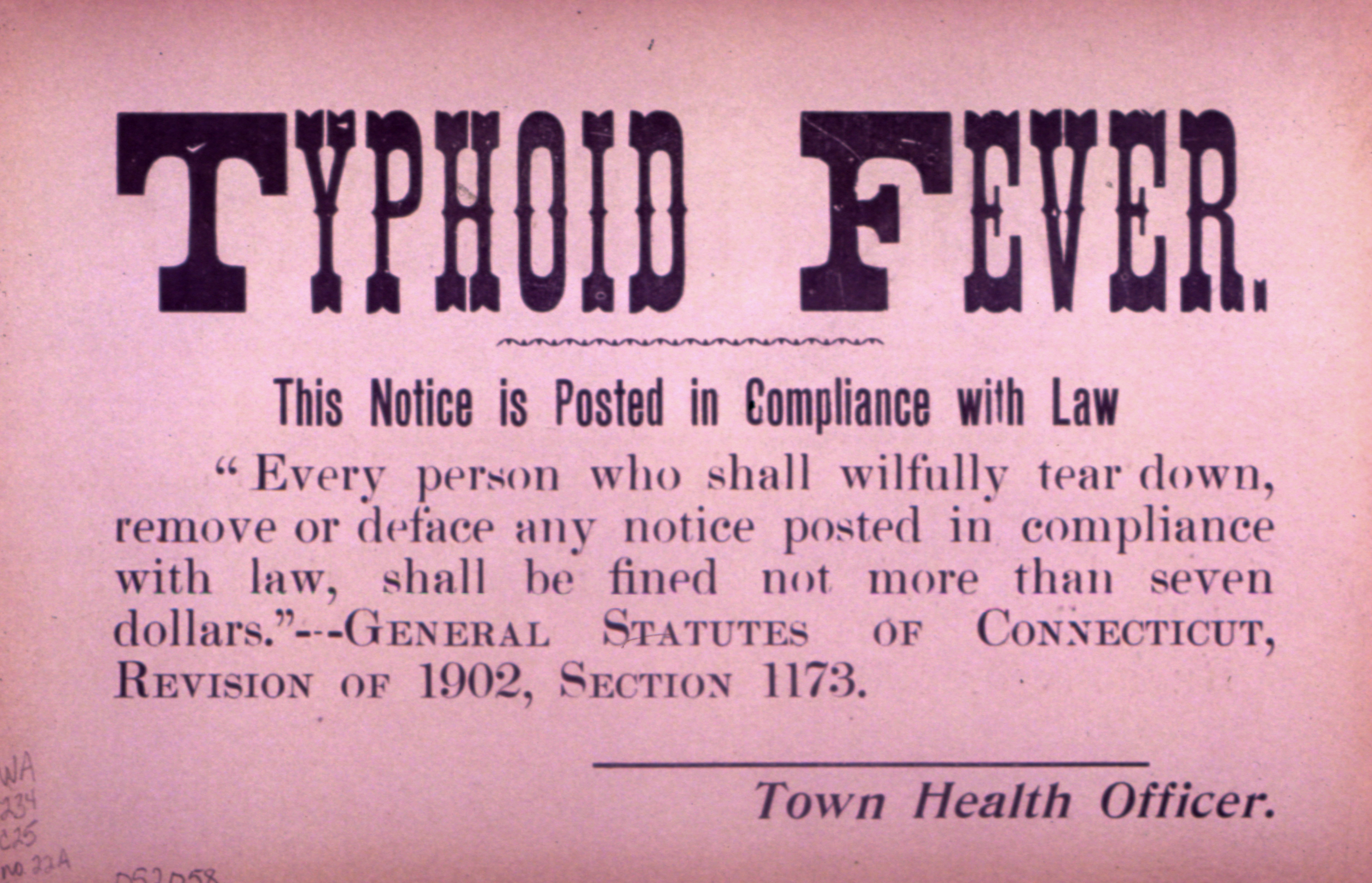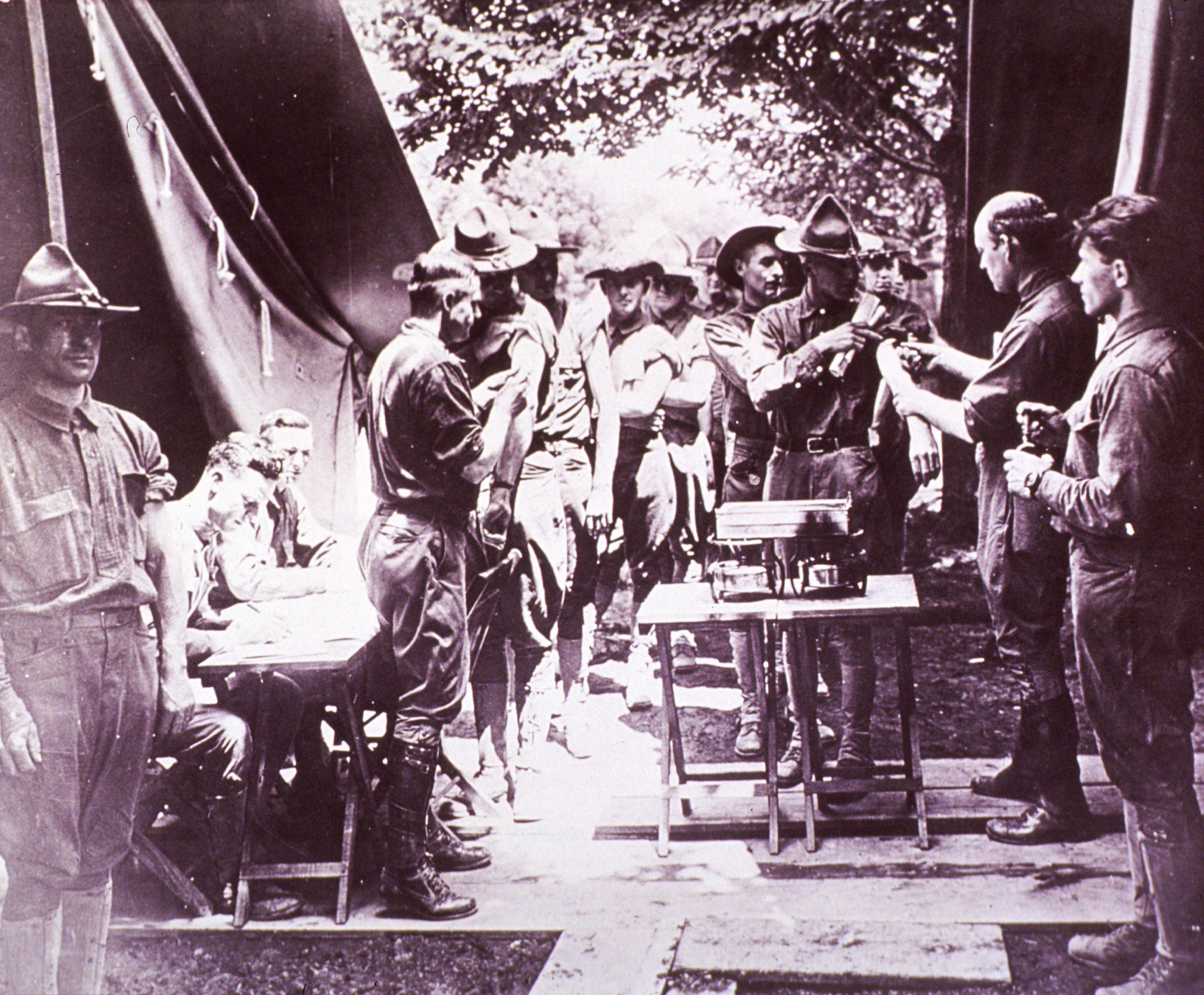Typhoid
Typhoid fever is a bacterial disease caused by Salmonella typhi. Symptoms of typhoid fever are similar to other gastrointestinal illnesses and include fever, headache, nausea, constipation or diarrhea, loss of appetite and a rose-colored rash on the body. Typhoid fever spreads from person to person via contaminated food and water, and via the fecal-oral route. The bacteria only lives in humans, not animals.
In 1896, Germans Richard Pfeiffer and Wilhelm Kolle proved that inoculation with killed typhoid bacteria resulted in immunity. A few months later Almroth E. Wright published a paper with a similar finding. Wright developed the first vaccine. Army physician Frederick F. Russell developed the first typhoid vaccine in the United States in 1909.
Perhaps the most famous case of typhoid was “Typhoid Mary,” a woman named Mary Mallon who lived in New York City and worked as a cook in 1906. She was a carrier of typhoid fever but never got sick herself. The New York City Department of Health had tried to isolate her, but she assumed a fake name and continued working in 1915. She had to be re-isolated. Mallon died in 1938 after causing 10 outbreaks, 51 cases, and 3 deaths.
At the National Institutes of Health (NIH) from 1943 until her retirement in 1971, Dr. Margaret Pittman worked to assess the efficacy of and establish national and international standards for the production of the typhoid vaccine. Dr. John B. Robbins and colleagues also worked on typhoid vaccines, promoting the assessment of the Vi capsular polysaccharide for protection of humans against typhoid.
There are two vaccines licensed for use in the U.S. currently, for people who are traveling to at-risk areas: Ty21a which is an oral capsule, and Vi capsular polysaccharide (ViCPS) which is injected.



